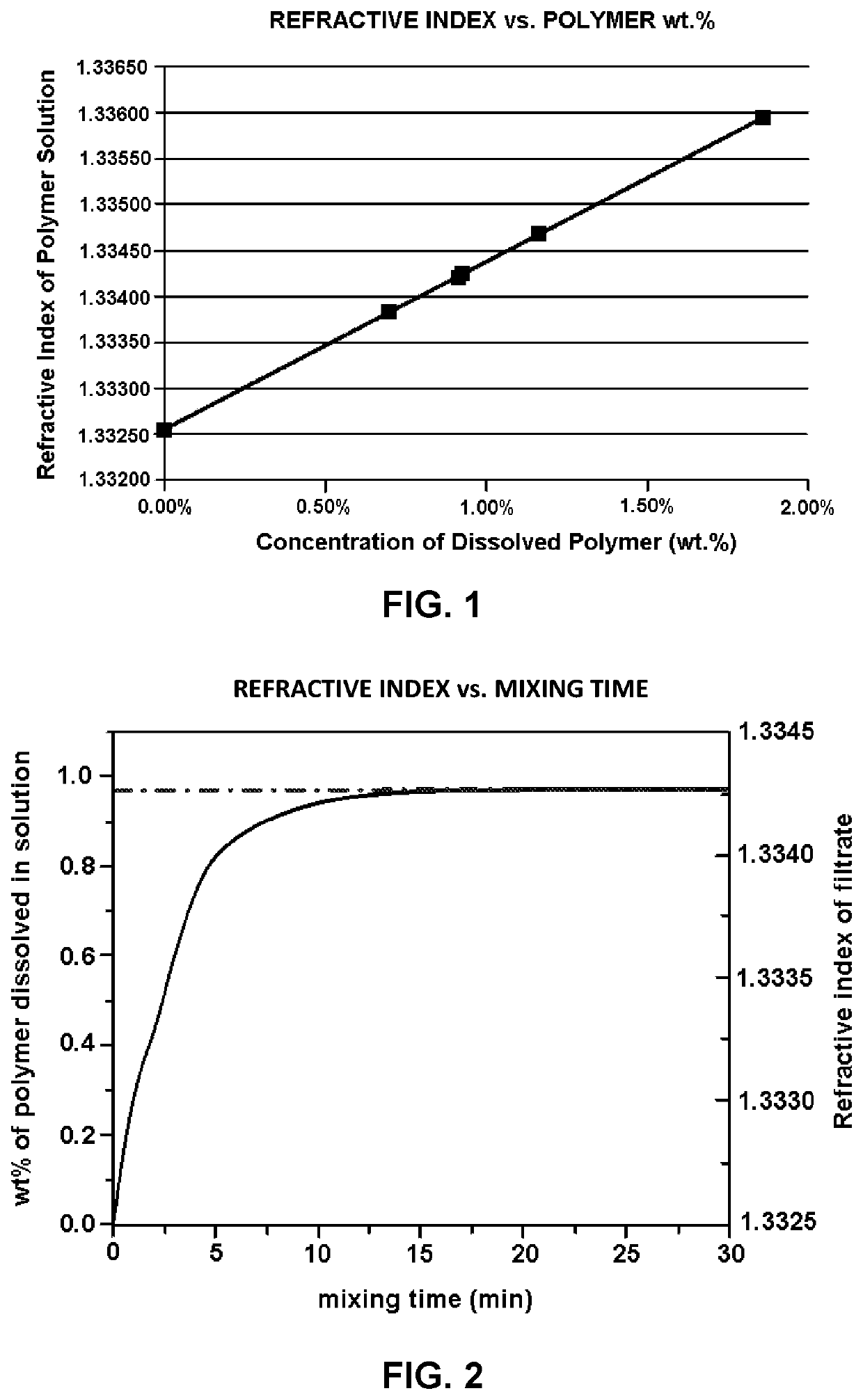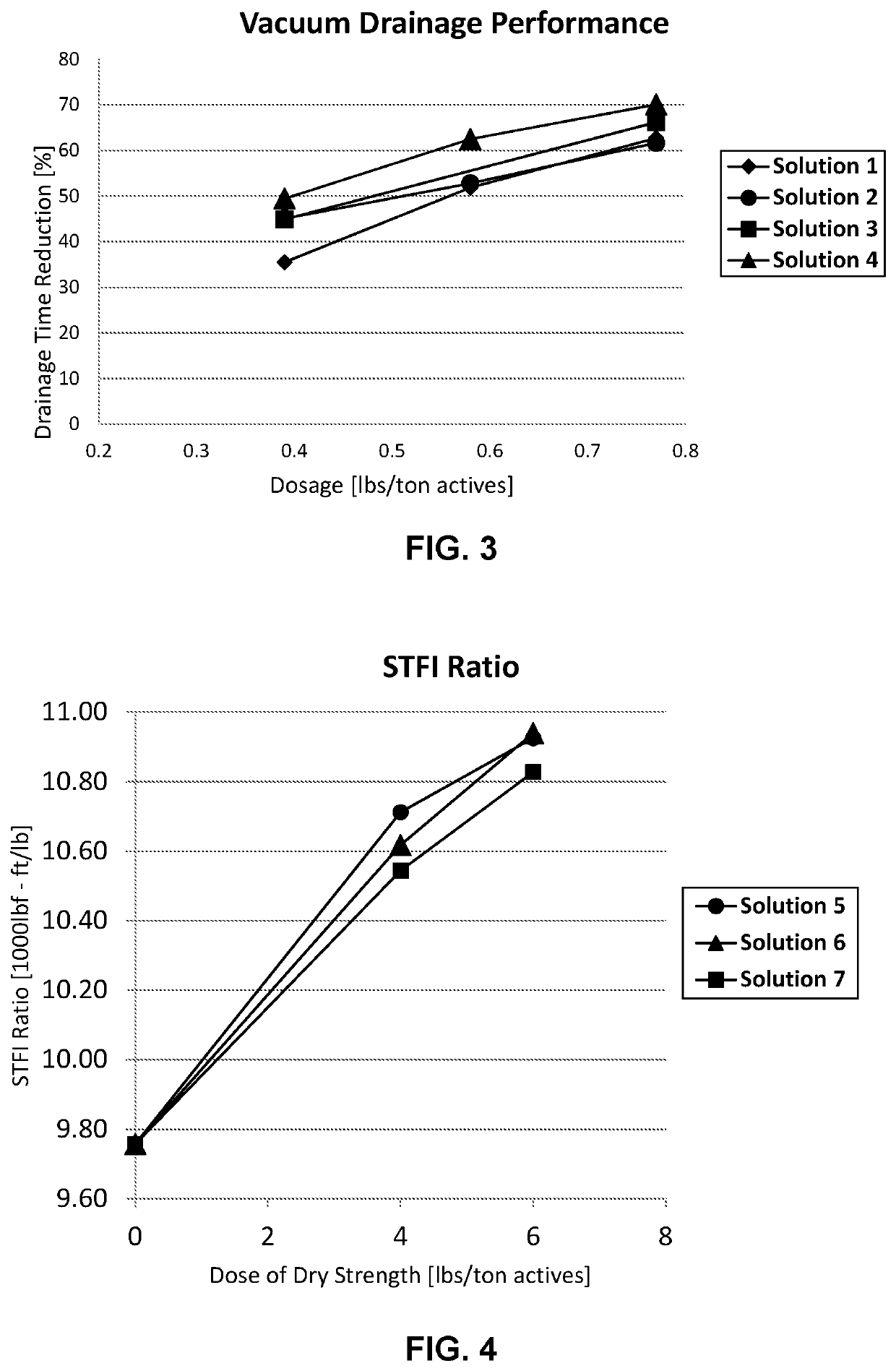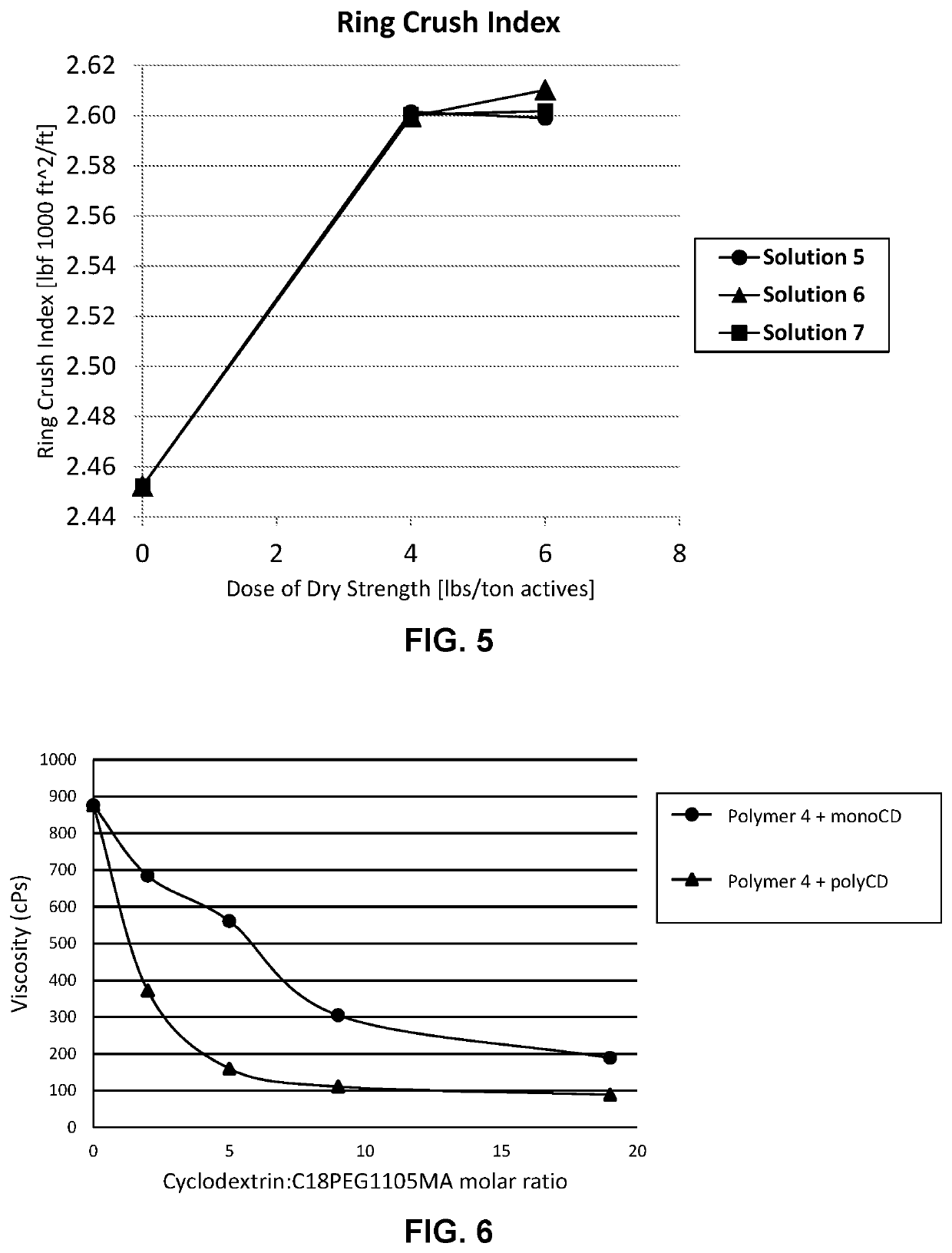Solution comprising an associative polymer and a cyclodextrin polymer
a technology of associative polymers and polymers, which is applied in the direction of pharmaceutical active ingredients, medical preparations, etc., can solve the problems of maintaining a large spatial footprint, affecting the performance of made-down polymers, and affecting the effect of mixing time, and achieving the effects of small particle size, low concentration, and extended mixing tim
- Summary
- Abstract
- Description
- Claims
- Application Information
AI Technical Summary
Benefits of technology
Problems solved by technology
Method used
Image
Examples
example 1
[0230]This example demonstrates the effect on vacuum drainage performance exhibited by a paper furnish treated with a solution comprising an associative polymer and a cyclodextrin polymer, as measured by drainage time reduction (%).
[0231]Solutions 1-4 were prepared and dosed at various concentrations into a dilute furnish received from a paper mill. This furnish was then drained through a screen and the drainage time was measured. The percent reduction in drainage time was measured relative to the drainage time of a dilute furnish that had not been treated. Accordingly, higher drainage time reduction (%) corresponds to better drainage performance. The drainage time reduction (%) results set forth in FIG. 3.
[0232]As demonstrated by FIG. 3, Solutions 3 and 4, comprising associative Polymer 3 outperformed Solutions 1 and 2 in drainage time reduction (%). FIG. 3 also shows that Solution 4, comprising associative Polymer 3 and a cyclodextrin polymer outperformed Solutions 1-3 at all dosa...
example 2
[0233]This example demonstrates the effect on paper dry strength exhibited by a sheet of paper treated with a solution comprising an associative polymer and a cyclodextrin polymer, as measured by STFI ratio.
[0234]Solutions 5-7 were prepared and dosed at various concentrations (dosages of 0, 4, and 6 lbs / ton actives) into cellulose fiber slurry. The treated fibers were then added to a handsheet mold and drained through a screen to form wet fiber pads. The pads were couched from the screen, pressed, and dried to yield finished paper sheets. The sheets were tested for compressive strength (STFI ratio) and the results set forth in FIG. 4.
[0235]As shown by FIG. 4, Solutions 5-7, comprising an associative polymer, provide improved compressive strength properties relative to a paper street that has not been treated with an associative polymer. The results set forth in FIG. 4 also demonstrate that the cyclodextrin polymer does not negatively affect the STFI ratio exhibited by a sheet of pap...
example 3
[0236]This example demonstrates the effect on paper dry strength exhibited by a sheet of paper treated with a solution comprising an associative polymer and a cyclodextrin polymer, as measured by ring crush index.
[0237]Solutions 5-7 were prepared and dosed at various concentrations (dosages of 0, 4, and 6 lbs / ton actives) into cellulose fiber slurry. The treated fibers were then added to a handsheet mold and drained through a screen to form wet fiber pads. The pads were couched from the screen, pressed, and dried to yield finished paper sheets. The sheets were tested for compressive strength (ring crush index) and the results set forth in FIG. 5.
[0238]As shown by FIG. 5, Solutions 5-7, comprising an associative polymer, provide improved compressive strength properties relative to a paper street that has not been treated with an associative polymer. The results set forth in FIG. 5 also demonstrate that the cyclodextrin polymer does not negatively affect the ring crush index exhibited...
PUM
| Property | Measurement | Unit |
|---|---|---|
| weight average molecular weight | aaaaa | aaaaa |
| wt. % | aaaaa | aaaaa |
| particle size | aaaaa | aaaaa |
Abstract
Description
Claims
Application Information
 Login to View More
Login to View More - R&D
- Intellectual Property
- Life Sciences
- Materials
- Tech Scout
- Unparalleled Data Quality
- Higher Quality Content
- 60% Fewer Hallucinations
Browse by: Latest US Patents, China's latest patents, Technical Efficacy Thesaurus, Application Domain, Technology Topic, Popular Technical Reports.
© 2025 PatSnap. All rights reserved.Legal|Privacy policy|Modern Slavery Act Transparency Statement|Sitemap|About US| Contact US: help@patsnap.com



